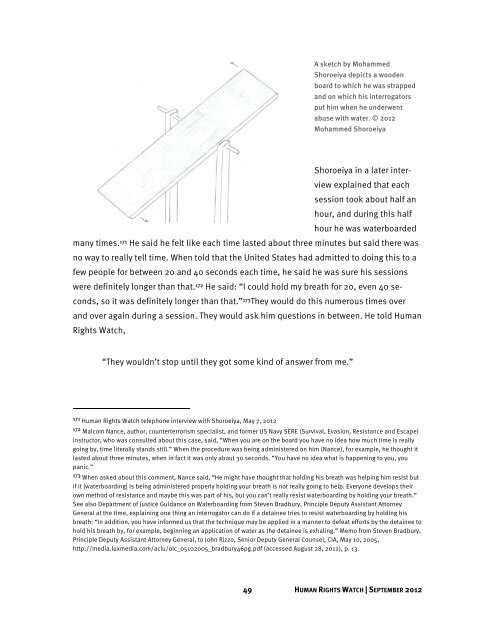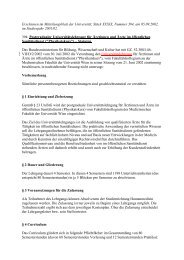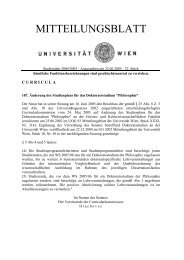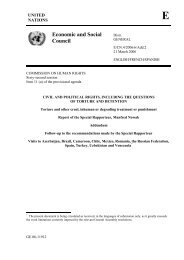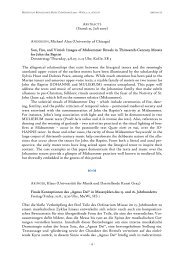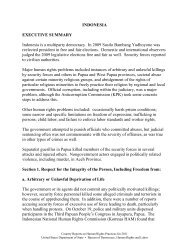Delivered Into Enemy Hands - Human Rights Watch
Delivered Into Enemy Hands - Human Rights Watch
Delivered Into Enemy Hands - Human Rights Watch
Create successful ePaper yourself
Turn your PDF publications into a flip-book with our unique Google optimized e-Paper software.
A sketch by Mohammed<br />
Shoroeiya depicts a wooden<br />
board to which he was strapped<br />
and on which his interrogators<br />
put him when he underwent<br />
abuse with water. © 2012<br />
Mohammed Shoroeiya<br />
Shoroeiya in a later interview<br />
explained that each<br />
session took about half an<br />
hour, and during this half<br />
hour he was waterboarded<br />
many times. 171 He said he felt like each time lasted about three minutes but said there was<br />
no way to really tell time. When told that the United States had admitted to doing this to a<br />
few people for between 20 and 40 seconds each time, he said he was sure his sessions<br />
were definitely longer than that. 172 He said: “I could hold my breath for 20, even 40 seconds,<br />
so it was definitely longer than that.” 173They would do this numerous times over<br />
and over again during a session. They would ask him questions in between. He told <strong>Human</strong><br />
<strong>Rights</strong> <strong>Watch</strong>,<br />
“They wouldn’t stop until they got some kind of answer from me.”<br />
171 <strong>Human</strong> <strong>Rights</strong> <strong>Watch</strong> telephone interview with Shoroeiya, May 7, 2012<br />
172 Malcom Nance, author, counterterrorism specialist, and former US Navy SERE (Survival, Evasion, Resistance and Escape)<br />
instructor, who was consulted about this case, said, “When you are on the board you have no idea how much time is really<br />
going by, time literally stands still.” When the procedure was being administered on him (Nance), for example, he thought it<br />
lasted about three minutes, when in fact it was only about 30 seconds. “You have no idea what is happening to you, you<br />
panic.”<br />
173 When asked about this comment, Nance said, “He might have thought that holding his breath was helping him resist but<br />
if it [waterboarding] is being administered properly holding your breath is not really going to help. Everyone develops their<br />
own method of resistance and maybe this was part of his, but you can’t really resist waterboarding by holding your breath.”<br />
See also Department of Justice Guidance on Waterboarding from Steven Bradbury, Principle Deputy Assistant Attorney<br />
General at the time, explaining one thing an interrogator can do if a detainee tries to resist waterboarding by holding his<br />
breath: “In addition, you have informed us that the technique may be applied in a manner to defeat efforts by the detainee to<br />
hold his breath by, for example, beginning an application of water as the detainee is exhaling.” Memo from Steven Bradbury,<br />
Principle Deputy Assistant Attorney General, to John Rizzo, Senior Deputy General Counsel, CIA, May 10, 2005,<br />
http://media.luxmedia.com/aclu/olc_05102005_bradbury46pg.pdf (accessed August 28, 2012), p. 13.<br />
49 HUMAN RIGHTS WATCH | SEPTEMBER 2012


